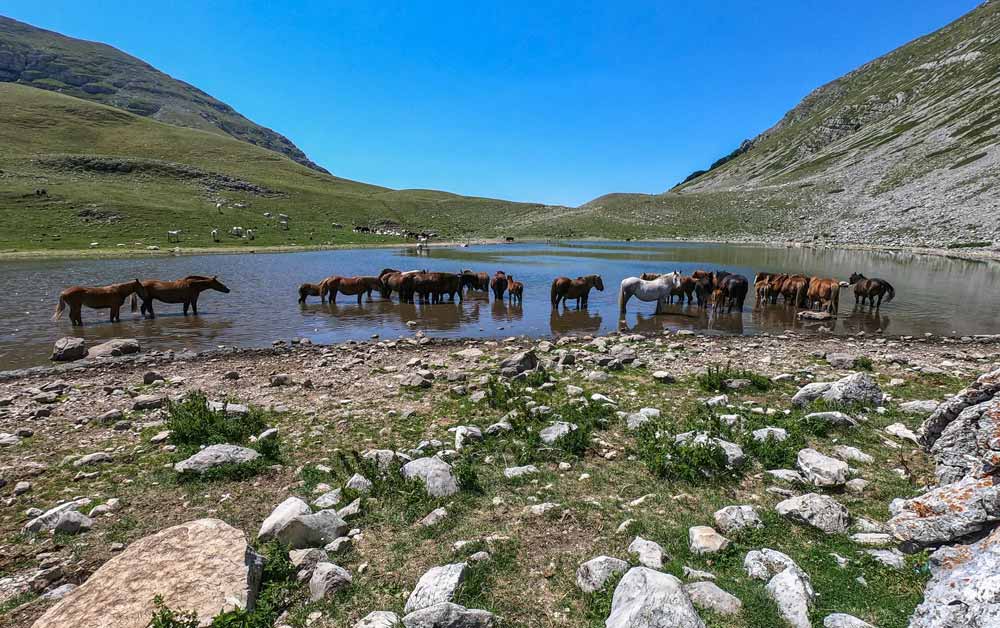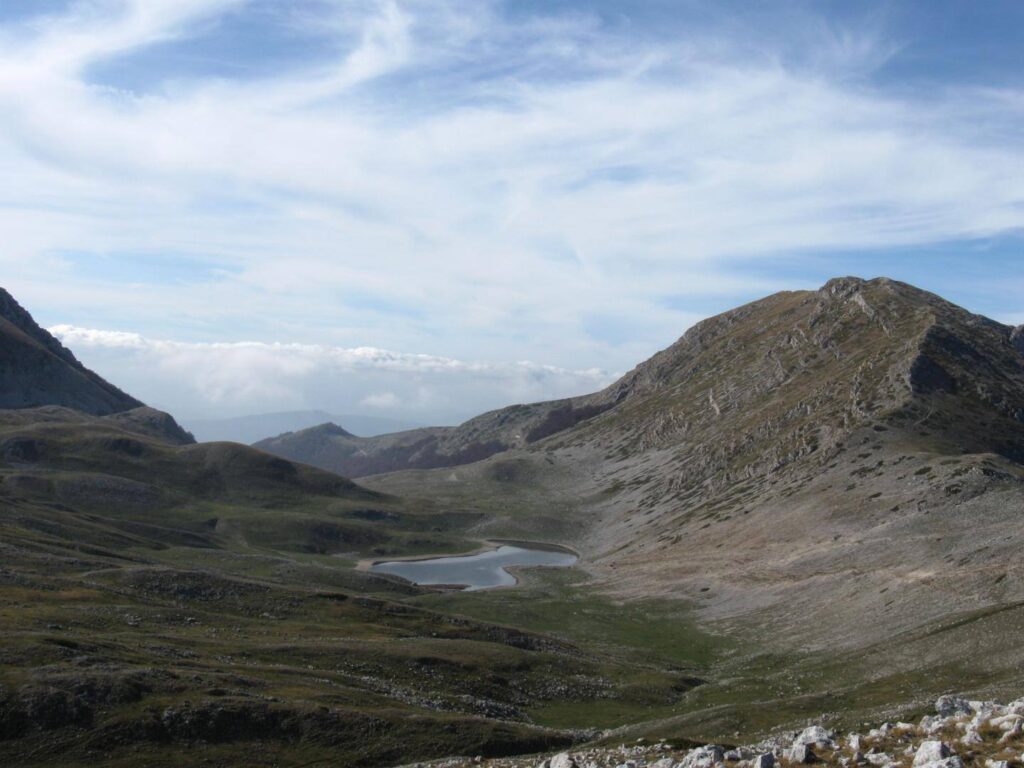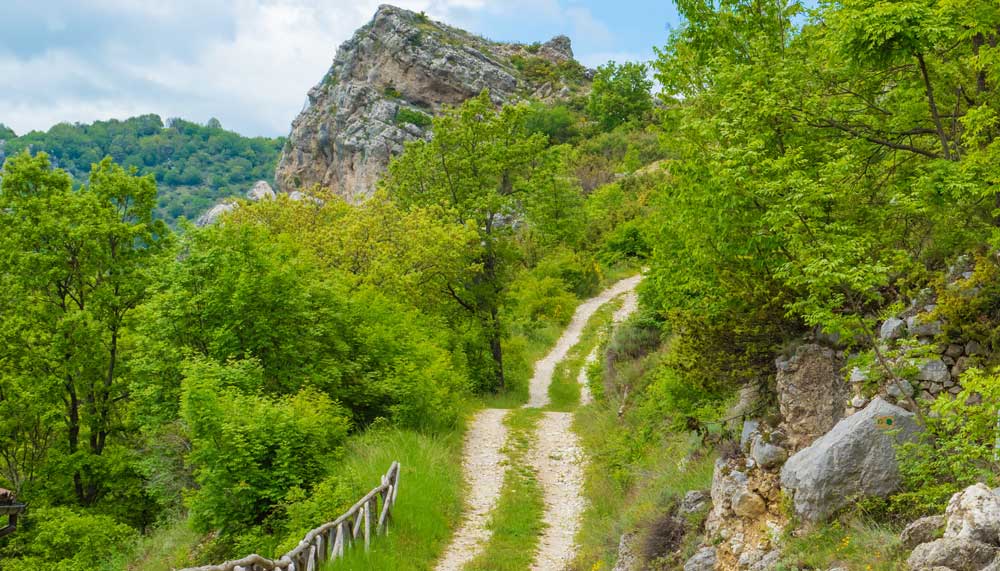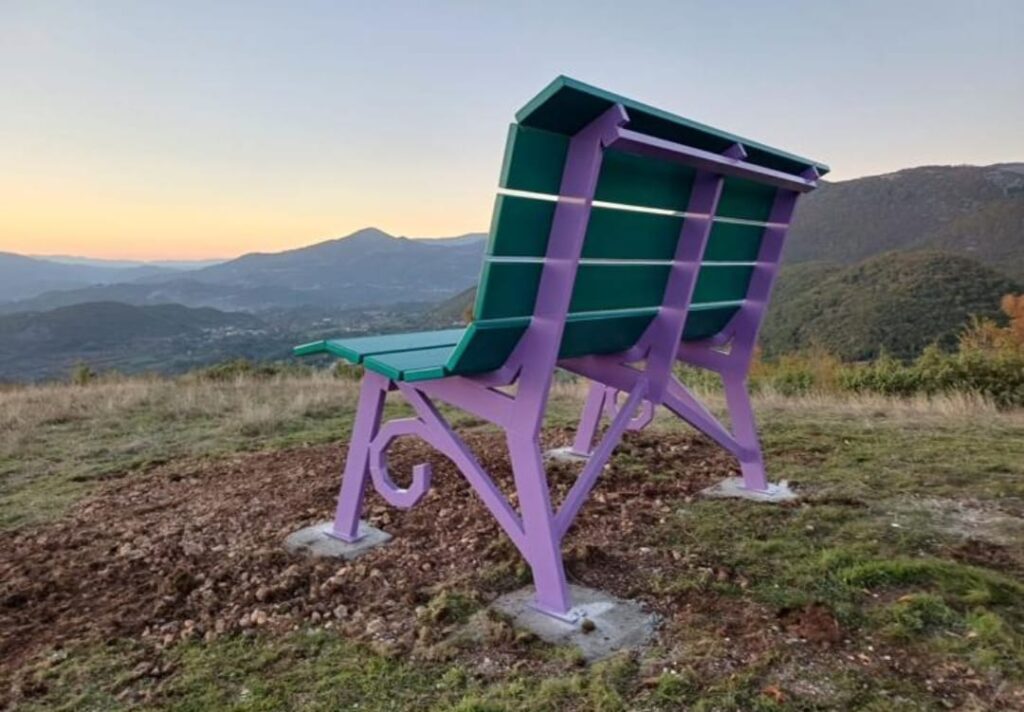Borgorose surrounded by the beech forests of the “Riserva Naturale Montagne della Duchessa” , at about 700 metres above sea level, is one of the seven villages of the Cicolano around the Lago del Salto, a turquoise gem brightly sparkling among the emerald beech woods of the two natural reserves “Monti di Navegna and Cervia” and “Monti della Duchessa”.

Lago della Duchessa
Mount Morrone, one of the highest peaks, stands out at over 2000 metres, followed by two deep valleys descending into the uncontaminated Lago della Duchessa at almost 1800 metres height.

Lago della Duchessa in the “Riserva Naturale Montagne della Duchessa”
The Lago della Duchessa is the highest lake in Lazio and one of the most altitudinous in the Central Apennines. Of karst and glacial origin, it is only fed by rainwater and snow. The name was given to the lake in the sixteenth century in homage to Margaret of Austria, Duchess of Parma, Piacenza, Leonessa and Cittaducale. In the mid-19th century, these mountains were infested with the brigands of the Banda di Cartore. They fought the Savoyards who were marching towards unification, hence the name of the route “Il Cammino dei Briganti”, a seven steps itinerary crossing the Lazio and Abruzzo Regions for 100 km.
In the mid-19th century, these mountains were infested with the brigands of the Banda di Cartore. They fought the Savoyards who were marching towards unification, hence the name of the route “Il Cammino dei Briganti”, a seven steps itinerary crossing the Lazio and Abruzzo Regions for 100 km.

Archaeological Museum of Cicolano in Borgorose
Not to be missed within the Reserve is the hamlet of Corvaro di Borgorose and the “Archaeological Museum of Cicolano (MAC)”, which preserves archaeological remains of the Equicoli, the ancient inhabitants of the Montagne della Duchessa. Objects from necropolises, sanctuaries and villas are exhibited, included the grave goods of the Tumulo di Corvaro, a collective funerary mould. In the seventh century BC. a 22-year-old woman was buried in the necropolis, together with precious necklaces, a leather stole with bronze plates and a strange sack containing snakes, rodents and small birds. The mound originally measured fifty metres in diameter and four in height, but later over 300 more tombs were added.

The Serpentone from Sant’Anatolia
The Serpentone (big snake) di Santa Anatolia, the typical lactose-and-gluten-free cake from Borgorose, is prepared with bitter and sweet almonds, lemon, and two coffee beans for the eyes. A religious symbol of the triumph of good over evil, the Serpentone is baked on July 10 for the feast of Santa Anatolia in the hamlet of the same name. It is said that, in 251 A.D, Anatolia was trapped into a bag with poisonous snakes, but came out miraculously unharmed the day after. In the portraits of Cere’s, the Goddess of Agriculture, the snake symbolizes the changing of the seasons and the cycle of death and rebirth.

Remains of the Equicoli in Corvaro di Borgorose
The village of Corvaro, abandoned after the earthquakes, was born after the fall of the Roman Empire, when local communities settled around small parish churches. During the attacks of the Saracens, they gathered inside fortified burgs. Corvaro Vecchia therefore lies between the Rocca above and the lower Loriano Hill, where the remains of the eleventh century Church of Santa Maria are to be found. The Corvaro Castle from the year 1000 includes the ruins of a majestic cylindrical tower, walls on an ellipsoidal plan, the remains of the four circular towers, and the main entrance, Porta Calata. Not to be missed the fifteenth century Church of San Francesco and the many small rural churches outside the village.
The Corvaro Castle from the year 1000 includes the ruins of a majestic cylindrical tower, walls on an ellipsoidal plan, the remains of the four circular towers, and the main entrance, Porta Calata. Not to be missed the fifteenth century Church of San Francesco and the many small rural churches outside the village.

Big Bench n. 389 in Borgorose
The new lilac Giant Bench n.389 was inaugurated on November 1, 2024 in the ancient village of Castelmenardo di Borgorose, on the top of Mount San Mauro, at 1,1680 metres above sea level. The artwork is nicknamed “The bench of the brigands (and of kindness)” in memory of the Banda di Cartore. It is reachable through a two km road starting in Collemaggiore, or by a thirty minutes walk along a mountain path from Castelmenardo.
The brewery “Birra del Borgo”, founded in Borgorose in 2005, produces beers with innovative methods and unusual local ingredients, such as the “Duchessa”, made with spelt grown on the mountains of the same name, or the seasonal beer “Genziana” the precious flower that colours the landscape in spring.

The Pizza sfogliata from Borgorose
The typical speciality of this area is the Pizza sfogliata, traditionally filled with minced meat, pepper and cheese. It can be tasted especially in Castelmenardo di Borgorose at the end of October, during “I Sapori del Borgo”, the festival of ancient crafts and typical wines and dishes from the Cicolano area.
